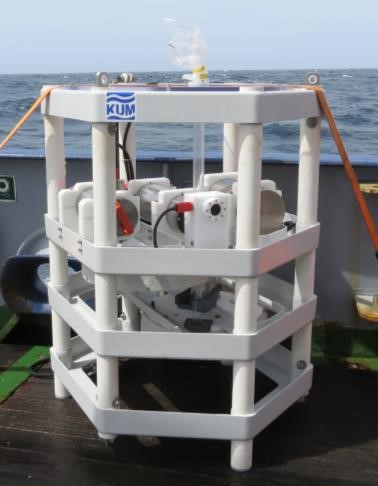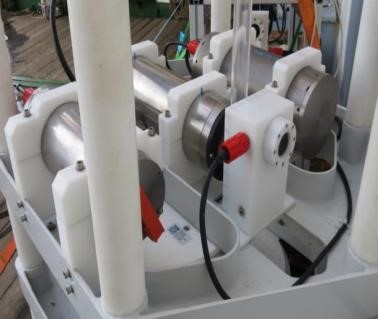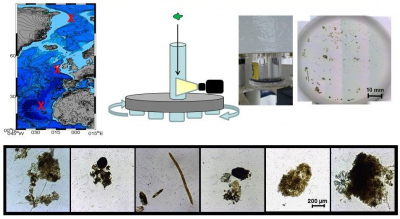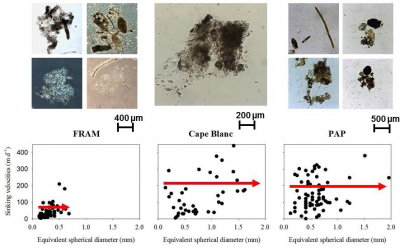- Startseite
- Morten Iversen
- BioOptical Platform - BOP
BioOptical Platform - BOP
SeaPump has developed a BioOptical Platform ‘BOP’ that combines a camera system and gel traps to differentiate between different particle types, their abundances, sizes, and sinking velocities at high temporal resolution. BOP will enable the study of both, small-scale processes affecting individual aggregates, as well as large-scale studies of all aggregates settling through the water column in different ocean regions.



BOP quantifies daily particle abundance and size distribution, measures daily size-specific settling velocities of individual particles, and collects and preserves intact fragile sinking organic aggregates. By deploying BOP together with traditionally deep ocean sediment traps provide long-term information on how changes in particle types and size distribution influence the export flux on high temporal resolution. BOP will help to answer fundamental questions of the content and structure of the biological carbon export to the deep ocean and how changes in the ecosystem structure and function influence the efficiency of the biological carbon pump. This will help to understand and identify the mechanisms and processes that trigger pulse fluxes or lead to situations with high flux attenuation. Thus, the results from BOP are of uttermost importance for our capabilities to predict future and understand past export flux. This information will improve existing global carbon models by providing understanding for season and regional components according to their prevailing food web structure. The success of BOP will contribute to a better understanding and quantification of matter export and carbon sequestration by the oceans. We are currently implementing oxygen sensors into the BOP system, to be able to measure respiration of aggregate-associated microbes throughout all seasons.



